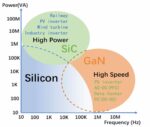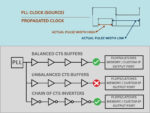You are currently viewing SemiWiki as a guest which gives you limited access to the site. To view blog comments and experience other SemiWiki features you must be a registered member. Registration is fast, simple, and absolutely free so please,
join our community today!
WP_Term Object
(
[term_id] => 157
[name] => EDA
[slug] => eda
[term_group] => 0
[term_taxonomy_id] => 157
[taxonomy] => category
[description] => Electronic Design Automation
[parent] => 0
[count] => 4344
[filter] => raw
[cat_ID] => 157
[category_count] => 4344
[category_description] => Electronic Design Automation
[cat_name] => EDA
[category_nicename] => eda
[category_parent] => 0
[is_post] =>
)
Daniel is joined by Dr. Mark Burton, the General Chair for this year’s DVCon Europe. DVCon is the premier conference on the application of languages, tools, and methodologies for the design and verification of electronic systems and integrated circuits.
Mark shares his long history of involvement in DVCon with Dan. He … Read More
Now that the dust has settled let’s talk more about TSMC’s Open Innovation Platform. Launched in 2008, OIP represents a groundbreaking collaborative model in the semiconductor industry. Unlike IDMs that controlled the entire supply chain, OIP fosters an “open horizontal” ecosystem uniting TSMC… Read More
For decades, chip design has been a delicate balance of creativity and drudgery. Architects craft detailed specifications, engineers read those documents line by line, and teams write and debug thousands of lines of Verilog and UVM code. Verification alone can consume up to 35 percent of a project’s cost and add many months to … Read More
I’ve read articles about power electronics, RF systems and high-frequency applications using SiC and GaN transistors, especially in EVs and chargers, but hadn’t looked into the details of GaN devices. A recent Silvaco webinar proved to be just the format that I needed to learn more about GaN design and optimization. Udita Mittal,… Read More
By Zameer Mohammed
This article claims to provide clear key insights of Min Pulse Width (MPW) timing signoff check, proactive closure strategies for faster time-to-market, and effective methods to prevent silicon failures.
Min Pulse Width (MPW) check for timing signoff has become an important design constraint at the sub-5nm… Read More
In the business press today I still find a preference for reporting proof-of-concept accomplishments for AI applications: passing a bar exam with a top grade, finding cancerous tissue in X-rays more accurately than junior radiologists, and so on. Back in the day we knew that a proof-of-concept, however appealing, had to be followed… Read More
David Zhi LuoZhang is Co-Founder and CEO of Bronco AI with extensive experience in building AI systems for mission-critical high-stakes applications. Previously while at Shield AI, he helped train AI pilots that could beat top human F-15 and F-16 fighter pilots in aerial combat. There, he created techniques to improve ML interpretability… Read More
In a rapidly evolving semiconductor landscape, where AI demands unprecedented computational power and efficiency, Synopsys has deepened its partnership with TSMC to pioneer advancements in AI-driven designs and multi-die systems. Announced during the TSMC OIP Ecosystem Summit last week, this collaboration leverages … Read More
At the AI Infra Summit 2025, Synopsys showed how artificial intelligence has become inseparable from the process of creating advanced silicon. The company’s message was clear: AI is an end-to-end engine that drives every phase of chip development. Three Synopsys leaders illustrated this from distinct vantage points. Godwin… Read More
Early last year we talked about state space models, a recent advance over large language modeling with some appealing advantages. In this blog we introduce neurosymbolic methods, another advance in foundation technologies, here applied to automated code generation. Paul Cunningham (GM, Verification at Cadence), Raúl Camposano… Read More










Jensen Huang Drops Donald Trump Truth Bomb on Joe Rogan Podcast